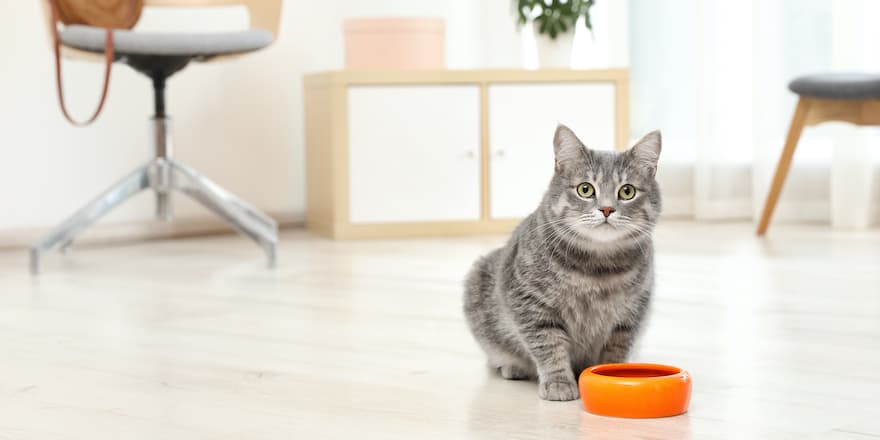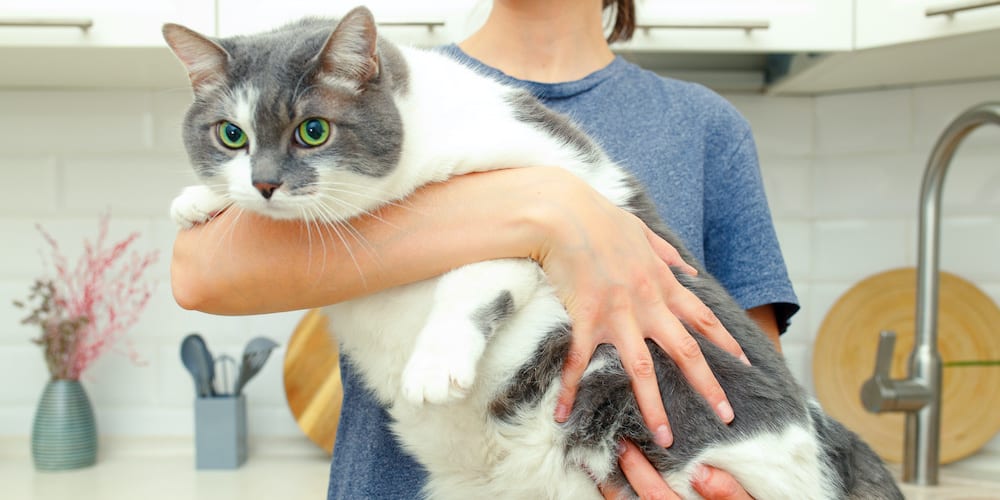Do you think your little feline is overweight? It’s entirely possible (and common!). Rest assured, there are several solutions available to help your cat lose weight.
Caring about your cat’s weight is already a good step, because many cat owners have an overweight cat without realizing it.
However, being overweight can lead to obesity if no measures are taken. Its life expectancy may then be reduced, because an obese cat is more prone to certain diseases like diabetes.
In any case, if you want to help your cat lose weight, I recommend scheduling an appointment with your veterinarian to create a tailored action plan that is safe for its health.
📚 Read also | The comprehensive ranking of cat kibbles according to a veterinarian’s criteria
1. Change its diet
Nowadays, there are kibble and wet foods specially formulated to meet the needs of overweight cats while reducing their body fat.
On the one hand, these foods are rich in fiber so your cat feels full. On the other hand, they are low in fat and high in protein to reduce body fat while maintaining muscle mass.
If you feed your cat a homemade ration, it may be necessary to recalculate it to help your cat lose weight. Don’t hesitate to consult your veterinarian.
Finally, don’t forget to make a gradual dietary transition for any change of food for your little companion.
2. Reduce portion sizes
It’s not uncommon in veterinary consultations to see cats or dogs overweight due to excessively large quantities of food given.
If you’re unsure about the quantities, I recommend asking your veterinarian to perform the calculations necessary for your cat’s needs.
It may sometimes be necessary to reduce the calories given to your companion by 20% to help them lose weight. Once the optimal weight is reached, the calculations should be done again so they don’t lose more weight but instead maintain their ideal weight.
Be careful, however, because reducing the amounts of their usual food can lead to a nutrient deficiency. To prevent deficiencies, this decision should be made in consultation with your veterinarian.
3. Add zucchini to its menu
When changing food or reducing your companion’s ration, they may still beg for food.
If you feel that your cat is always hungry, you can supplement their ration with zucchini.
They are low in calories and help fill the stomach. You can start by giving a few cubes of raw or cooked zucchini mixed directly with their regular food to improve palatability, then gradually increase the amount.
However, some cats do not like their taste; you’ll need to test whether that’s the case for your companion.
4. Exercise
Any weight-loss effort must be accompanied by appropriate physical exercise. It depends on your cat’s lifestyle. If your cat goes outside often, it should already be getting plenty of daily activity.
However, if your cat lives exclusively indoors and doesn’t move much, there are several options. I recommend several short play sessions with your cat every day so it gets exercise.
Some toys are now designed for your cat to play alone, for example while you’re away.
Remember that, whatever your cat’s lifestyle, physical exercise is important to keep it healthy.
5. Limit treats
The amount of food you give your cat is correct, but it’s still gaining weight? In that case, you should consider the issue of treats.
Indeed, table scraps and treats can contribute to your cat’s weight gain. They should therefore be reduced or even eliminated in some cases, especially if you want to help it lose weight.
However, if your cat continues to gain weight and you are not giving it treats, it may be an underlying condition. I therefore recommend discussing it with your veterinarian for investigation.
6. Give several small meals
A cat’s natural eating behavior means it eats several small meals a day. To accommodate this, I recommend dividing its daily ration into several small meals to be given throughout the day.
Thus, at least 4 meals per day are recommended. To help you with this task, smart feeders are now available on the market and dispense the exact amount for a given cat.
Such a device can be useful, especially if you have multiple cats in your household and not all of them should lose weight.

How do I know if my cat needs to lose weight?
Determine its body condition score
To determine whether your cat is overweight, it is necessary to know its body condition score (NEC). It is also called BCS, which stands for Body Condition Score in English.
A cat’s NEC ranges from 1 to 9 depending on its body condition. The optimal range is around 4 to 5 out of 9. To learn how to determine your cat’s NEC, you can refer to the WSAVA chart (World Small Animal Veterinary Association).
Note that this score is used to assess body fat. It therefore does not take muscle mass into account.
To help you assess your cat’s NEC, don’t hesitate to ask your veterinarian.
Know the weight range for its breed
Depending on your cat’s breed, its ideal weight may vary. Indeed, some large breeds, such as the Maine Coon, can reach a weight of 8 to 10 kg without being overweight.
I therefore recommend not keeping a single fixed weight in mind for all cats, but rather referring to your companion’s breed standards. You can also consult the LOOF website (Livre Officiel des Origines Félines) for more information.
Moreover, besides breed, weight can also vary depending on age, sex, or whether your cat is neutered or not.
Sources
Laurence Yaguiyan-Colliard, “Nutritional management of feline obesity”, Le Point Vétérinaire, no. 313 of 01/03/2011, pp. 28 to 31
WSAVA nutritional recommendations



